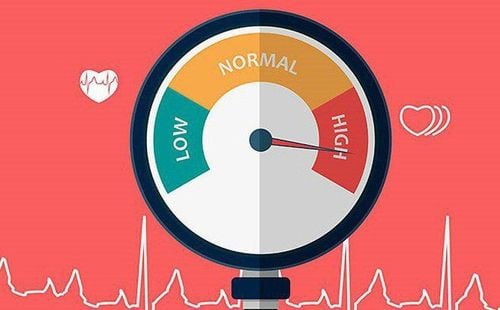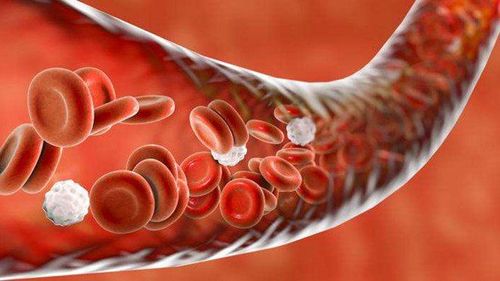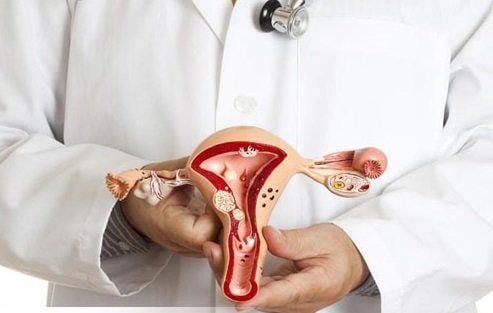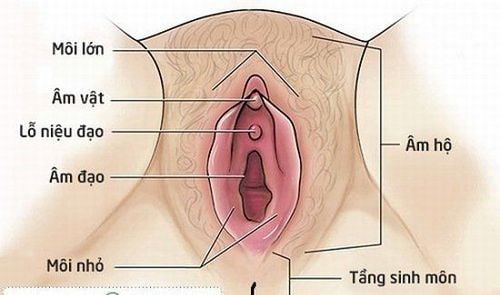This is an automatically translated article.
Postpartum bleeding is a serious, often unexpected, obstetric complication that is the leading cause of maternal death. Quickly finding the cause of postpartum bleeding and properly managing postpartum bleeding is the duty of the physician to save the patient's life.1. What is postpartum bleeding?
Postpartum bleeding is a serious complication and one of the major causes of obstetric mortality. Postpartum haemorrhage is when the amount of blood loss is greater than 500ml or shock due to postpartum blood loss, usually occurs after the first 24 hours, but can also occur as late as 6 weeks after delivery. In some cases, women lose blood in a smaller amount but still affect the general condition due to previous health and condition.In the literature, the frequency of postpartum bleeding above 300ml is 18-26%, heavy bleeding over 1000ml with vaginal delivery is 3-4.5%, with cesarean section is 6%.
The most common causes of postpartum bleeding are:
Pathology during the placental period: due to retained placenta, uterine atony. Injury to the genital tract due to uterine rupture, cervical tear, perineal tear, vaginal tear. Coagulopathy (this is rare). The principle of management of postpartum bleeding is medical resuscitation combined with obstetric management. Find the cause of the bleeding and treat according to the cause.

Chảy máu sau đẻ là một biến chứng nghiêm trọng và là một trong những nguyên nhân gây tử vong chính của sản khoa
2. Causes and treatment of postpartum bleeding
2.1 Diseases during pregnancy 2.1.1 Vegetable residue More or less in the uterus causes bleeding. The causes of retained placenta may be:Disorders of uterine contractions: there may be uterine atony or increased uterine tone. Increased uterine tone forms a constriction in the inner cervical opening, causing the placenta to be trapped on the ring. The placenta is abnormally attached: the placenta is attached to the placenta, the placenta attaches to the uterine muscle, transmembrane vesicles. These are rare cases, the incidence is 1 in 10,000 births. Placenta often occurs in abnormal cases of the uterine lining such as old scars, fibroids, endometrial hypoplasia, uterine malformations. Abnormalities of the position of the placenta: the placenta is attached to the lower segment, the uterine wall is deformed, and the top of the uterus is thin. The uterine activity in these areas is less effective, making it difficult to shed the placenta. The common symptoms of retained placenta are poor uterine contraction, oozing bleeding, blood volume may be more or less, bright red blood mixed with clots. Vegetable defects can be detected early by examining vegetables and vegetable membranes, if detected late, the patient loses too much blood, which can lead to shock.
Management of postpartum bleeding due to retained placenta: intravenous fluids, give the patient analgesia and control the uterus. Inject uterotonics Oxytocin 5-10ui or/and Ergometrin 0.2mg. Use systemic antibiotics, monitor pulse, blood pressure, bleeding and uterine contractions. Perform resuscitation with blood transfusion if anemia is acute. If the patient is still bleeding, administer Oxytocin intramuscularly or intravenously (or Carbetocin 100mcg intramuscularly). Re-control the uterus if necessary.
2.1.2 Uterine atony is a common cause of postpartum bleeding. Uterine stagnation can be caused by:
Pregnant women with anemia, weakness, high blood pressure, pre-eclampsia,... Uterine excessively dilated due to polyhydramnios, large fetus or twins Uterine weakness due to prolonged labor Loss of uterine tone after giving birth too quickly Vaginal and placental membranes in the uterus Uterine abnormalities such as fibroids, uterine malformations Symptoms of patients with uterine atony are:
Bleeding immediately after placental abruption, Blood may flow continuously or when pressing on the fundus of the uterus the blood will flow out massively. The uterus is soft, flabby due to poor elasticity, there is no safe mass even though the placenta is already open.

Đờ tử cung là một nguyên nhân chảy máu sau đẻ thường gặp, đờ tử cung có thể do tăng huyết áp
Catheterization to empty the bladder. Use all mechanical measures to stop bleeding such as rubbing the uterus through the abdominal wall, pressing the uterus by hand, blocking the abdominal aorta. Remove all remnants and blood clots to clean the uterine lumen. Intramuscular or intramuscular injection 5-10 IU Oxytocin, if the uterus still does not contract, then IM or IV Ergometrin 0.2mg. Infusion to prevent shock. During the first 2 hours, massage the fundus once every 15 minutes for 2 minutes until the uterus feels like a mass under the arm. If, after massaging the uterus, injecting uterotonics, but the blood continues to flow, when the massage stops, the uterus becomes flabby, it may be that the uterus has become paralyzed. The patient may require surgical intervention to tie the two uterine arteries or a partial hysterectomy,... 2.2 Injury to the genital tract 2.2.1 Uterine rupture Uterine rupture often occurs during labor, This is a dangerous complication in obstetrics that threatens the life of mother and fetus. There are many possible causes of uterine rupture such as:
Mother's cause: distorted, narrow, abnormal pelvis; malformed, underdeveloped uterus; uterine scarring due to old cesarean section or injury when removing artificial placenta, abortion,... Causes of pregnancy: total or partial fetal enlargement, fetal malformation, placental adhesions, hydrocephalus, Abnormal fetal position,... Causes by doctors: injuries caused by childbirth, interventions that tear the cervix up to the lower segment, improper use of drugs to increase uterine contractions,... Symptoms Symptoms of uterine rupture are: before the rupture of the uterus, the pregnant woman has severe pain, after a sudden sharp pain, the pain is gone, maybe shock. Fetal heart loss, uterine contractions no longer; abdominal distortion, distension, pain; palpating the fetus just below the abdominal skin, vaginal bleeding,...
Management of postpartum bleeding due to uterine rupture: shock resuscitation, emergency surgery and treatment of uterine lacerations.
Tear of the vulva, vagina, perineum
The causes of tearing of the genital tract after childbirth are usually:
On the mother's side: solid perineum (due to the elderly mother giving birth), infection, edema, scar. Fetal side: large fetus, breech fetus Due to procedure: to assist with suction, forceps.... Diagnose the cause of postpartum bleeding due to genital tract by observing the bleeding from laceration or cut perineum, examine the tear closely to determine the extent of the tear. A mild tear only affects the skin and vaginal mucosa, a more severe tear can damage the skin, vaginal mucosa, and perineal muscles to the central fibrous node.
Manage postpartum bleeding due to laceration of the genital tract with local anesthesia or analgesics. Check if the uterus does not have any placenta left, then proceed to restore the suture.
Take care of pregnant women with postpartum bleeding due to tearing of the genital tract by keeping the sutures clean and dry, washing the vulva 2-3 times a day, especially after defecation and urination; After washing, use a clean towel to pat dry. Follow a light diet to avoid constipation.
2.3 Blood clotting disorder

Nếu nguyên nhân chảy máu sau đẻ do rối loạn đông máu thì tình trạng chảy máu thường nặng
Management of postpartum bleeding due to coagulation disorders as follows:
Transfusion of fresh blood, fresh serum, providing anticoagulant factors. Fibrinogen concentrate is indicated in cases of severe fibrinogen deficiency. After correction of coagulation factors and cessation of bleeding, thromboembolism prophylaxis should be administered for 21 days. In some cases, a patient may be assigned a partial hysterectomy with ligation of the hypogastric artery Vinmec International General Hospital is one of the hospitals that not only ensures professional quality with a team of professional staff. leading medical doctors, a system of modern equipment and technology, but also outstanding with comprehensive and professional medical examination, consultation and treatment services; civilized, polite, safe and sterile medical examination and treatment space.
Please dial HOTLINE for more information or register for an appointment HERE. Download MyVinmec app to make appointments faster and to manage your bookings easily.













